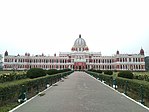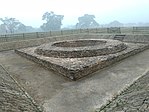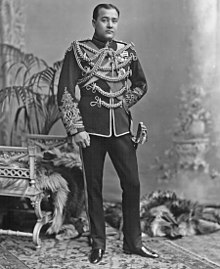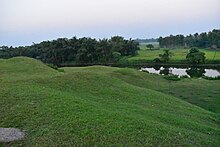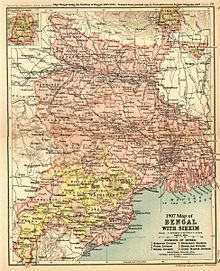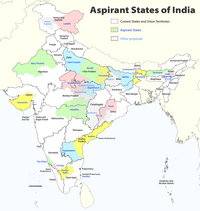Cooch Behar district
| ||||||||||||||||||||||||||||||||||||||||||||||||||||||||||||||||||||||||||||||||||||||||||||||||||||||||||||||||||||||||||||||||||||||||||||||||||||||||||||||||||||||||||||||||||||||
Read other articles:

Person specializing in combat or warfare Warriors redirects here. For the basketball team, see Golden State Warriors. For other uses, see Warrior (disambiguation) and The Warriors (disambiguation). This article has multiple issues. Please help improve it or discuss these issues on the talk page. (Learn how and when to remove these template messages) This article's lead section may be too short to adequately summarize the key points. Please consider expanding the lead to provide an accessible ove…

Questa voce sull'argomento anatomia è solo un abbozzo. Contribuisci a migliorarla secondo le convenzioni di Wikipedia. Segui i suggerimenti del progetto di riferimento. Le informazioni riportate non sono consigli medici e potrebbero non essere accurate. I contenuti hanno solo fine illustrativo e non sostituiscono il parere medico: leggi le avvertenze. Muscolo peroneo terzoSi osserva il muscolo peroneo terzoAnatomia del Gray(EN) Pagina 482 Nome latinoMusculus peroneus tertius SistemaSistema…

Statistics and causes of suicide in India Suicide Social aspects ACEs Altruistic Bullying Copycat Dysfunctional family Epidemic Identity performance Legislation Philosophy Religious views Right to die School bullying Shame Social isolation Social media and suicide Social rejection Social support Toxic workplace Voluntary euthanasia Workplace bullying Crisis Assessment of risk Crisis hotline (list) Intervention Prevention Suicide attempt Suicide watch Types Assisted Bullying and suicide (list) Co…

Braille alphabets used in ex-Yugoslavia See also: Cyrillic Braille Yugoslav BrailleScript type Alphabet Print basisGaj's Latin alphabetMacedonian alphabetSlovene alphabetLanguagesSerbo-Croatian, Slovene, MacedonianRelated scriptsParent systemsBrailleYugoslav Braille Yugoslav Braille is a family of closely related braille alphabets used for South Slavic languages of former Yugoslavia, namely Serbo-Croatian, Slovene and Macedonian. It is based on the unified international braille conventions, with…

Erik Moller redirects here. For the Danish architect, see Erik Møller. German journalist and software developer (born 1979) Erik MöllerMöller in 2014Born1979 (age 44–45)[1]GermanyAlma materHTW BerlinOccupation(s)Journalist, software developer, authorTitleDeputy Director of Wikimedia Foundation (2008–2015)Websitehumanist.de/erik Erik Möller (born 1979) is a German freelance journalist,[2] software developer,[3] author, and former deputy director of th…

2017 song by Big Sean and Metro Boomin featuring 21 Savage Pull Up N WreckSingle by Big Sean and Metro Boomin featuring 21 Savagefrom the album Double or Nothing ReleasedNovember 3, 2017Length3:47LabelGOODDef JamRepublicUniversalBoominatiSongwriter(s)Sean AndersonLeland WayneShayaa Abraham-JosephEarl TaylorJoshua LuellenProducer(s)Metro BoominSouthsideBig Sean singles chronology Miracles (Someone Special) (2017) Pull Up N Wreck (2017) So Good (2018) Metro Boomin singles chronology Ric Fl…

Norwegian sculptor (1925–2019) Aase Texmon RyghAase Texmon Rygh in 2018Born(1925-04-13)April 13, 1925Troms County, NorwayDiedMay 21, 2019(2019-05-21) (aged 94)NationalityNorwegianEducationNorwegian National Academy of Craft and Art Industry 1944-46Royal Danish Academy of Fine Arts 1948-49Notable workMöbiusStyleModernismWebsitewww.rygh.org Aase Texmon Rygh, (April 13, 1925 – May 21, 2019) was a Norwegian sculptor working in the modernist style. Early life and education Aase Texmon Rygh …

Сельское поселение России (МО 2-го уровня)Новотитаровское сельское поселение Флаг[d] Герб 45°14′09″ с. ш. 38°58′16″ в. д.HGЯO Страна Россия Субъект РФ Краснодарский край Район Динской Включает 4 населённых пункта Адм. центр Новотитаровская Глава сельского посел…

Family of fishes For other gobies with this family's common name, see sleeper goby (disambiguation). Eleotridae Mogurnda mogurnda Scientific classification Domain: Eukaryota Kingdom: Animalia Phylum: Chordata Class: Actinopterygii Order: Gobiiformes Family: EleotridaeBonaparte, 1835 Eleotridae is a family of fish commonly known as sleeper gobies, with about 34 genera and 180 species.[1] Most species are found in the tropical Indo-Pacific region, but there are also species in subtropical …

密西西比州 哥伦布城市綽號:Possum Town哥伦布位于密西西比州的位置坐标:33°30′06″N 88°24′54″W / 33.501666666667°N 88.415°W / 33.501666666667; -88.415国家 美國州密西西比州县朗兹县始建于1821年政府 • 市长罗伯特·史密斯 (民主党)面积 • 总计22.3 平方英里(57.8 平方公里) • 陸地21.4 平方英里(55.5 平方公里) • �…

Residential skyscraper in Manhattan, New York 930 Fifth AvenueGeneral informationTypeCooperative apartmentsArchitectural styleClassicizing ModernLocationUpper East Side, Manhattan, New York City, U.S.Coordinates40°46′26″N 73°57′56″W / 40.773814°N 73.965561°W / 40.773814; -73.965561Completed1940OwnerFifth Avenue Apartments, Inc.Height210.44 feet (64.14 m)Technical detailsFloor count19Design and constructionArchitect(s)Emery RothReferences[1] 930 Fi…

حصار بهرام خان تقسيم إداري البلد إيران [1] إحداثيات 37°42′15″N 45°00′54″E / 37.70416667°N 45.015°E / 37.70416667; 45.015 الرمز الجغرافي 18602 تعديل مصدري - تعديل حصار بهرام خان هي قرية في مقاطعة أرومية، إيران. عدد سكان هذه القرية هو 262 في سنة 2006.[2] مراجع ^ صفحة حصار…

List of cyclists The following is a list of teams and cyclists that took part in the 2021 Vuelta a España.[1][2][3] Teams Twenty-three teams participated in the 2021 Vuelta a España. All nineteen UCI WorldTeams were obliged to participate. Four UCI ProTeams also participated: Alpecin–Fenix was automatically invited as the best-performing ProTeam in 2020, as well as three wildcard teams selected by the Amaury Sport Organization. Usually, only twenty-two teams would par…

Statua di Nicola Pisano nella Galleria degli Uffizi, a Firenze. Nicola Pisano (Puglia, tra il 1210 e 1220 circa – tra 1278 e 1287 circa) è stato uno scultore e architetto italiano tra i principali maestri della scultura gotica a livello europeo. Ebbe un ruolo di innovatore per la scultura, similmente a Giotto, in seguito, per la pittura, in quanto con la sua rappresentazione della figura e dello spazio miranti al naturalismo e al realismo, trasformò i caratteri della scultura italiana della …

Geographic area in North America For the lake in Stutsman County, North Dakota, see Prairie Pothole (lake). Map of the Prairie Pothole Region of North America (U.S. Geological Survey, Northern Prairie Wildlife Research Center) Barringer Slough in Iowa, a remnant of the extensive prairie wetlands that once covered the region. The Prairie Pothole Region (PPR; French: Région des cuvettes/fondrières des prairies) is an expansive area of the northern Great Plains that contains thousands of shallow …

此條目没有列出任何参考或来源。 (2012年2月7日)維基百科所有的內容都應該可供查證。请协助補充可靠来源以改善这篇条目。无法查证的內容可能會因為異議提出而被移除。 伊凡一世 伊凡一世·丹尼洛维奇(钱袋)(Ива́н I Дани́лович Калита́,1288年—1340年3月31日),是莫斯科大公(约1325年-1340年3月31日在位),亚历山大·涅夫斯基幼子丹尼尔·亚历山德罗维奇之�…
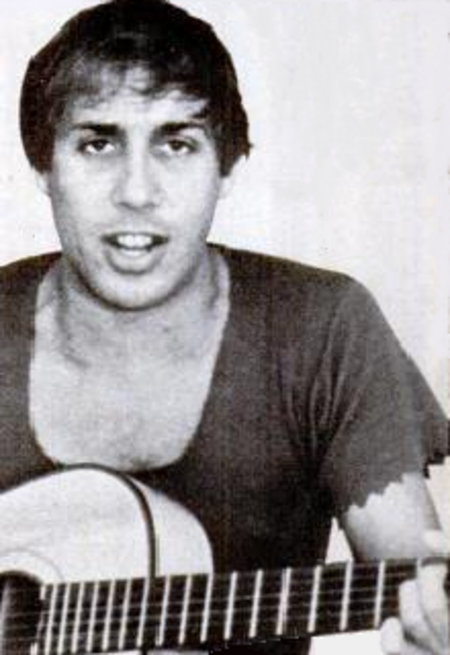
Dormi amore, la situazione non è buonaСтудійний альбомВиконавецьАдріано ЧелентаноДата випуску23 листопада 2007Записаний2007, Мілан, ІталіяЖанрпоп-рок блюз тангоТривалість48 хв 46 сМоваіталійськаЛейблClan CelentanoПродюсерАдріано ЧелентаноКлаудія МоріПрофесійні огляди* Rolling Stone (Дуже добре)[1] …
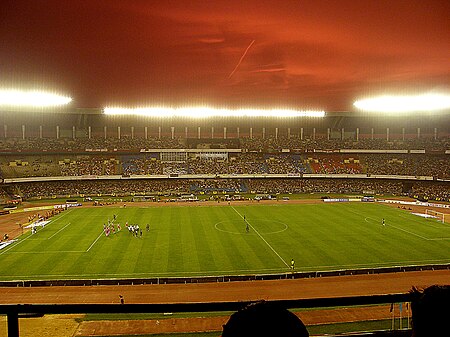
Yuva Bharati Krirangan যুব ভারতী ক্রীড়াঙ্গনStadion Salt LakeLokasi Kolkata, Benggala Barat, IndiaPemilikPemerintah Benggala BaratKapasitas85.000PermukaanRumput (Astroturf) dengan sebuah trek atletik standar OlimpiadeDibuka1984PemakaiEast Bengal Club Mohun Bagan Athletic Club Mohammedan Sporting Yuva Bharati Krirangan (dalam bahasa Bengali: যুবভারতী ক্রীড়াঙ্গন, Yuva Bharati Krirangan atau Stadion Pemuda India), atau dik…

Concejo Municipal de Aserrí Datos generalesÁmbito Cantón de AserríTipo UnicameralLiderazgoPresidente Sonia Aguilar Zamora (PUSC)desde el 1 de mayo de 2024 Vicepresidente Alexander Antonio Calero López (PLN)desde el 1 de mayo de 2024 ComposiciónMiembros 7 (regidores propietarios) Concejo Municipal de Aserrí (2024-2028).svgGrupos representados 2 PLN 2 ADN 2 PUSC 1 PNG E…

Questa voce o sezione sull'argomento società calcistiche italiane non cita le fonti necessarie o quelle presenti sono insufficienti. Puoi migliorare questa voce aggiungendo citazioni da fonti attendibili secondo le linee guida sull'uso delle fonti. A.C. EsteCalcio Segni distintiviUniformi di gara Casa Trasferta Colori sociali Giallo, rosso Dati societariCittàEste Nazione Italia ConfederazioneUEFA Federazione FIGC CampionatoSerie D Fondazione1920 Presidente Renzo Lucchiari Allenatore …
